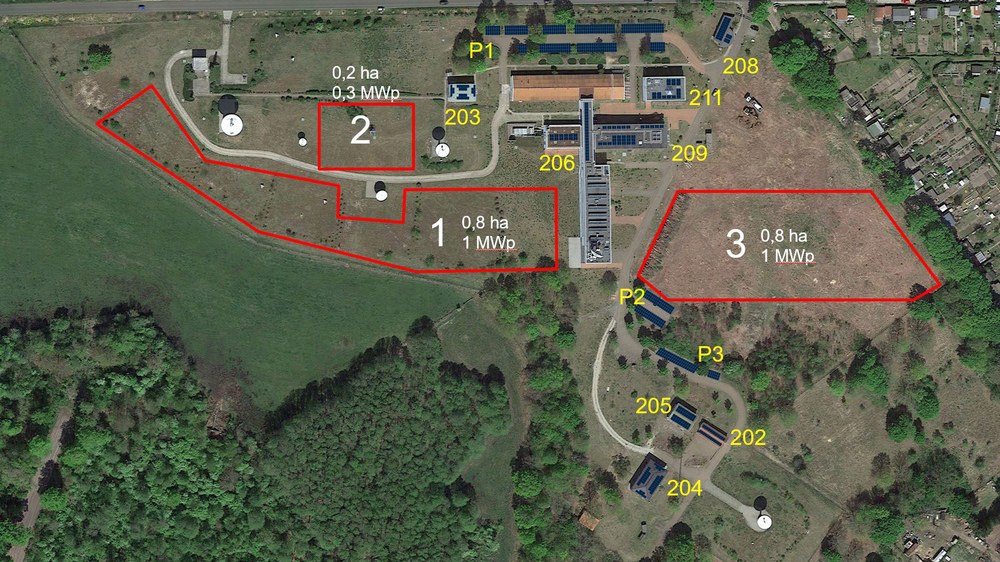Photovoltaic systems on buildings and open spaces

DLR/Google Maps/IBC SOLAR
The Executive Board of the German Aerospace Center (Deutsches Zentrum für Luft- und Raumfahrt; DLR) has decided to take a major step towards achieving the goal of becoming climate neutral by 2035: Photovoltaic systems are to be installed on roofs, facades and open spaces in order to maximise its electrical self-sufficiency.
The resolution calls for DLR to install photovoltaic systems to produce its own electricity up to the amount of its annual self-consumption. DLR's current total electricity consumption amounts to approximately 80,000 megawatt hours (MWh) per year. "The funding required for this measure is estimated at 130 million euros, making it one of the largest construction budgets ever approved for a single activity at DLR," confirms Jörg Jaspers, Head of Technical Infrastructure at DLR. The project is to be refinanced through the expected savings in electricity procurement costs, among other things. The return on investment for the photovoltaic systems is in the order of 14 to 21 years. To ensure that the target is achieved by 2035, a monitoring system will be set up to continuously adapt the measures.

Promising potential analysis
This decision is based on the action areas defined in DLR's sustainability strategy dated October 2022, which sets out the vision of making DLR climate neutral by 2035. "By installing photovoltaic systems, DLR will not only be able to achieve its sustainability goals in this area, but also strengthen its energy resilience and contribute to the energy transition in Germany," adds Philipp Bergeron, DLR Executive Board Representative for Sustainability.
In an initial potential analysis, a conservative potential of approx. 12 MWp was estimated on the roof surfaces at 15 DLR sites. This corresponds to around half of DLR's roof areas. For example, a potential of around 2600 kilowatts peak (conservatively around 1300 kilowatts peak) was determined for the Neustrelitz site. The difference is determined by the actual conditions on site.
In order to ensure the target of maximum roof coverage by 2035, the potential in the regions will be examined by mid-2024 and incorporated into a binding list of measures. Given that the roof surfaces will only be able to cover around 15 percent of the electricity demand, photovoltaic systems will also be required on open spaces.
The DLR-wide preparations for implementation are being carried out by the interdisciplinary photovoltaics working group under the leadership of the Technical Infrastructure department. This group consists of representatives from the specialist areas, energy management, the sustainability department and members of facility management in the regions.
